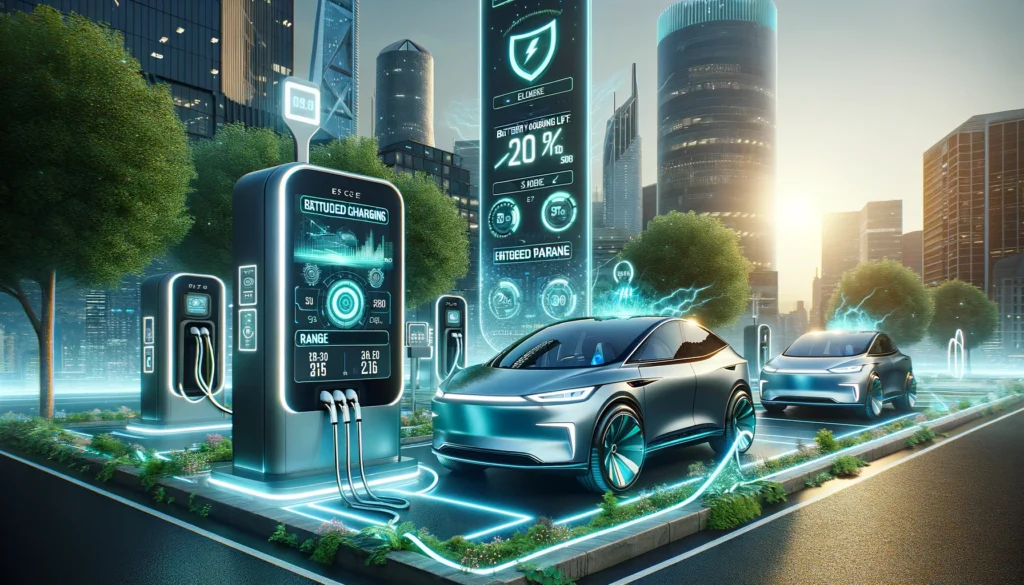Introduction
Imagine a future where every car on the road is whisper-quiet, emissions are a thing of the past, and fueling up your vehicle is as convenient as charging your smartphone. This future is not far off; it’s already beginning to materialise with the rise of electric vehicles (EVs). As we charge forward into a new era of transportation, EVs are becoming an increasingly common sight, thanks in part to advancements in technology and a growing awareness of the environmental impact of fossil fuels. With home charging solutions simplifying the process of ‘refuelling,’ the transition to electric is not just about adopting new technology—it’s about embracing a lifestyle change that benefits both the planet and our pockets.

The Shift to Electric Vehicles
Globally, the automotive industry is witnessing an electric revolution. Sales of electric vehicles are surging as consumers become more eco-conscious and governments set ambitious targets for reducing carbon emissions. The shift is fueled by a growing recognition that EVs offer a viable and sustainable alternative to internal combustion engine vehicles, which are significant contributors to air pollution and climate change. The EV market’s growth trajectory is further supported by the declining costs of batteries and the expansion of charging infrastructure, making electric cars more accessible to the average consumer.
Advancements in EV Technology
The appeal of electric vehicles is bolstered by rapid advancements in technology. Today’s EVs boast significantly improved battery life, increased range, and reduced charging times. These enhancements address early consumer concerns about ‘range anxiety,’ the fear of running out of power before reaching a charging station. With some models now offering ranges that rival traditional cars on a single charge, EVs are more practical than ever for both city commuting and longer journeys.

The Economic Case for EVs
The economic benefits of electric vehicles become clear when considering the total cost of ownership. While the initial purchase price of EVs can be higher than traditional cars, federal tax credits, reduced maintenance costs due to fewer moving parts, and the low cost of electricity compared to gasoline contribute to long-term savings. The financial case for electric vehicles is strengthened as the cost of batteries continues to fall and their efficiency increases.
Home Charging Systems: The New Normal
As electric vehicles gain popularity, home charging systems are becoming a part of the new normal for EV owners. These charging stations, ranging from basic setups that use existing outlets to high-powered chargers that require professional installation, offer unprecedented convenience. Charging at home eliminates the need to visit a gas station, allowing drivers to wake up to a fully charged car each morning. Home charging not only fits seamlessly into daily life but also uses off-peak electricity rates for additional savings.
Installation and Maintenance of Home Chargers
The installation of a home charging station typically involves a simple process carried out by a qualified electrician. It’s crucial to follow local regulations and manufacturer guidelines to ensure safety and optimal operation. Maintenance of home chargers is minimal, mostly requiring regular inspections and keeping the unit clean. Properly installed and maintained, home chargers can last for many years, matching the lifespan of several EVs.
Government Incentives and Policies
Government incentives are playing a critical role in accelerating the adoption of electric vehicles and the installation of home charging systems. These incentives often take the form of tax credits, rebates, and grants, reducing the cost barrier for consumers. Additionally, policies that support the development of public charging infrastructure and the research into next-generation battery technologies are shaping a favorable environment for EVs.
Future Outlook
The trajectory for electric vehicles and home charging solutions points towards a future where they dominate the automotive market. With continuous improvements in battery technology and charging infrastructure, coupled with increasing consumer demand and supportive government policies, the potential for growth in the EV sector is immense.
Conclusion
The electric vehicle revolution is well underway, with home charging solutions playing a fundamental role in its expansion. As we continue to advance toward a more sustainable and economically sound future, the shift to electric vehicles appears not just a possibility, but an inevitability. For those considering the switch, the array of benefits—from environmental impact to economic savings—makes a compelling case. It’s time to charge forward into the electric era.





